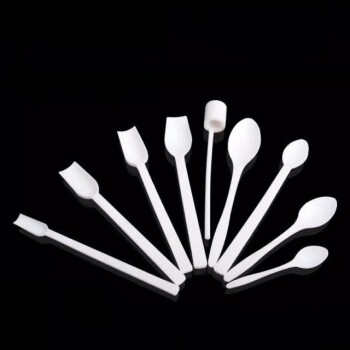Introduction to XRF Spectral Analysis
Applications and Sample Types
X-ray fluorescence (XRF) spectral analysis is a versatile technique employed across various fields, including geology, metallurgy, environmental science, the chemical industry, and materials science. This method is capable of analyzing a wide range of sample types, such as lumpy solids, powders, and liquids. Among these, powders are the most frequently analyzed due to their prevalence in many industrial and natural samples, including cement, coal, and dust.
The versatility of XRF in handling different sample types is particularly advantageous in industries where homogeneity and consistency are critical. For instance, in the cement industry, the analysis of powder samples ensures that the quality control processes are rigorous and precise. Similarly, in environmental monitoring, the ability to analyze dust samples helps in assessing air quality and identifying potential pollutants.
In the field of geology, XRF is used to analyze rock and mineral samples, which are often in the form of powders. This is crucial for understanding the composition of geological formations and for mineral exploration. In metallurgy, the analysis of metal powders is essential for quality control in the production of alloys and other materials.
The use of XRF in the chemical industry extends to the analysis of raw materials and finished products, where powders are commonly encountered. This ensures that the chemical compositions meet the required specifications, thereby maintaining product quality and safety.
Overall, the widespread use of XRF spectral analysis in these diverse fields underscores its importance as a reliable and efficient analytical technique.
Importance of Powder Specimen Sampling
Powder specimen sampling is indispensable in XRF spectral analysis, particularly when dealing with irregularly shaped solids that necessitate crushing into powder or when liquids must be solidified for analysis. The uniformity and consistency of the powder sample directly influence the accuracy and reliability of the XRF results.
In cases where the original sample is a solid with an irregular shape, the process of crushing it into a fine powder ensures that the sample is homogeneous, thereby reducing errors associated with non-uniform composition. This homogenization is critical for obtaining consistent and reproducible XRF spectra. Similarly, when dealing with liquid samples, solidification through methods such as lyophilization or chemical precipitation allows for the same level of precision in analysis as with powdered solids.
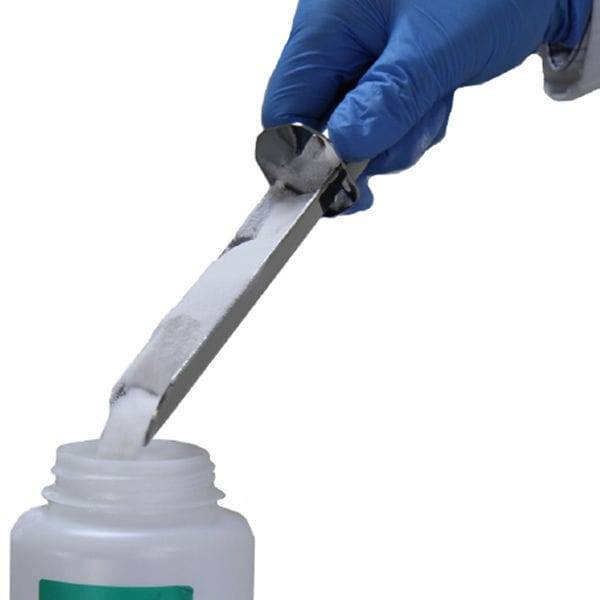
The importance of proper powder specimen sampling extends to the preparation techniques themselves. For instance, the crushing and grinding of samples to a specific particle size, typically around 20 μm, is a key step that ensures the sample's readiness for XRF analysis. This meticulous preparation not only enhances the analytical sensitivity but also minimizes the potential for sample-related errors.
Moreover, the choice of tabletting rings, whether plastic, aluminum, or steel, plays a significant role in the final quality of the powder specimen. Each type of ring has its own advantages and considerations, such as the pressure required and the resulting sample density, which can impact the detection limits of different elements. Therefore, understanding and applying the correct sampling and preparation techniques is essential for achieving optimal results in XRF spectral analysis.
Methods for Analyzing Powder Samples
Powder Compacting Method
The powder compacting method is a straightforward, rapid, and cost-effective technique, ideal for handling extensive analytical workloads and trace element analysis. This method encompasses several critical steps, beginning with the drying and roasting of the powder to remove any moisture or volatile components. Following this, the powder undergoes a meticulous process of mixing and grinding to ensure homogeneity and consistency.
Compacting the powder involves pressing and compressing the mixture into the desired shape or die. This step is crucial as it significantly enhances the density of the product by reducing potential voids. The resultant form, known as the green compact, signifies that the part has been shaped through the compacting process. The pressure applied during compacting varies between 80 MPa and 1600 MPa, with the specific requirement dependent on the properties of the metal powder. For instance, softer powders typically require pressures ranging from 100 MPa to 350 MPa, whereas harder metals like steel and iron necessitate pressures between 400 MPa and 700 MPa.
| Type of Powder | Compacting Pressure Range (MPa) |
|---|---|
| Soft Powders | 100 - 350 |
| Hard Metals | 400 - 700 |
The compacting process is not only essential for shaping but also for preparing the powder for subsequent sintering. Though the green compact is formed under extreme pressure, it is not yet strong enough for use. Sintering, the next phase, involves heating the green compact at high temperatures to create a permanent bond between the metal particles. The controlled atmosphere during sintering, enriched with carbon, ensures a neutral or carburizing environment, which ultimately determines the properties of the sintered materials.
Powder compaction is also pivotal in the creation of composite materials. By employing a hydraulic press, engineers can compress powder into various shapes, yielding materials that are both strong and lightweight. This versatility makes powder compaction an indispensable tool for researchers and scientists in the development of new composite materials.

Steps in Powder Compacting
The powder compacting process involves several critical steps, each contributing to the final quality of the sample for X-ray fluorescence (XRF) analysis. The process begins with powder direct tabletting, where the finely ground powder is directly compressed into the desired shape without any additives. This method is straightforward but may not always yield the highest density or uniformity.
For more controlled and uniform results, powder dilution tabletting is employed. In this step, the powder is mixed with a diluent to ensure a more homogeneous distribution, which can significantly improve the accuracy of the XRF analysis. The choice of diluent depends on the sample's properties and the specific requirements of the analysis.
Another essential aspect of powder compacting is the use of binders. Common binders include boric acid, methyl cellulose, polyethylene, paraffin, and starch. The role of these binders is to enhance the cohesiveness of the powder, ensuring that the compacted sample holds its shape and does not crumble during the analysis. The amount of binder added is crucial; too little may result in a weak compact, while too much can affect the detection limit of light elements, potentially skewing the analysis results.
Compacting pressure plays a pivotal role in this process, typically ranging from 80 MPa to 1600 MPa. The pressure required varies depending on the type of metal powder being compacted. For instance, softer powders may require pressure between 100 MPa and 350 MPa, whereas harder metals like steel and iron necessitate pressures between 400 MPa and 700 MPa. Properly applied pressure not only reduces voids but also significantly increases the density of the product, resulting in a stronger and more stable compact.
The compacting process can be further enhanced by using specialized techniques such as isostatic pressing. This method involves applying pressure from multiple directions through a liquid or gaseous medium surrounding the compacted part, ensuring uniform compaction and higher green compact density.
In summary, the powder compacting process is a multi-faceted operation that involves careful consideration of direct tabletting, dilution tabletting, binder usage, and appropriate compacting pressure. Each step is meticulously executed to ensure that the final compacted sample is suitable for accurate and reliable XRF analysis.
Sample Preparation Techniques
Crushing and Grinding
The process of preparing samples for X-Ray Fluorescence (XRF) spectral analysis often begins with crushing and grinding, a critical step that ensures the sample is in a suitable form for accurate analysis. Typically, samples are crushed to a particle size of 74 μm or less, with optimal results achieved at about 20 μm. This reduction in particle size is essential for homogenizing the sample and ensuring uniform distribution of elements, which is crucial for precise XRF measurements.
Several methods can be employed to achieve the desired particle size:
- Mortars and Pestles: Traditional and manual, these tools are useful for preliminary crushing and grinding, especially for small sample quantities.
- Mechanical Vibration Mills: These devices use mechanical vibrations to grind samples efficiently, making them suitable for medium to large sample sizes.
- Ball Mills: Highly effective for grinding samples to fine particles, ball mills use the impact and friction of grinding balls to reduce the sample size to the required level.
The choice of grinding method depends on the sample size, hardness, and the specific requirements of the analysis. Regardless of the method used, achieving a uniform particle size distribution is key to ensuring the reliability and accuracy of the XRF results.
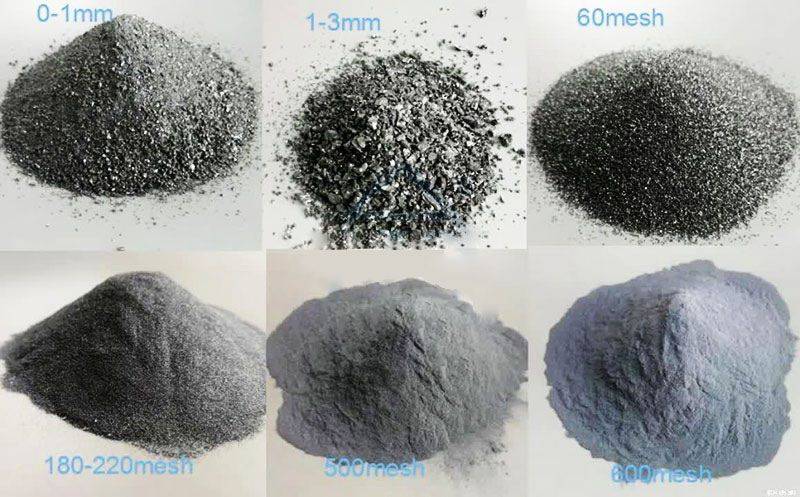
Pressure Sample Equipment
Manual or electric hydraulic presses are essential tools in the process of molding powder samples into standardized shapes for X-ray fluorescence (XRF) spectral analysis. These presses are used to compact powder samples into aluminum cups, aluminum rings, or plastic/steel rings, ensuring uniformity and consistency in the sample preparation process. The choice between manual and electric presses often depends on the scale of the operation and the specific requirements of the analysis.
Common pressures applied during the tabletting process range from 10 to 40 tons, which are sufficient to achieve the necessary density and stability in the powder samples. The pressure is typically applied for a holding time that varies between 10 to 60 seconds, allowing the powder to consolidate properly without causing excessive stress or deformation. This controlled application of pressure ensures that the resulting tablets are uniform in size and density, which is crucial for accurate and reproducible XRF analysis.
In addition to the pressure and holding time, the type of ring used (plastic, aluminum, or steel) can also influence the quality of the tablet. Each type of ring has its own advantages and is selected based on the specific properties of the sample and the analytical requirements. For instance, aluminum rings are often preferred for their lightweight and corrosion-resistant properties, while steel rings offer greater durability and strength. Plastic rings, on the other hand, are often used for their ease of handling and cost-effectiveness, especially in large-scale operations.
The use of hydraulic presses in sample preparation is not only efficient but also critical for maintaining the integrity of the samples. By applying consistent pressure and holding times, these presses help to minimize variability in the resulting tablets, thereby enhancing the accuracy and reliability of the XRF spectral analysis. This meticulous approach to sample preparation ensures that the data obtained from the analysis is both precise and representative of the original sample material.
Types of Tabletting Rings
Plastic Ring Tabletting
Plastic rings are a popular choice for tabletting powder samples in X-ray fluorescence (XRF) spectral analysis due to their versatility and ease of use. These rings are typically made from materials such as polyethylene or polypropylene, which are chemically inert and resistant to the pressures and conditions encountered during the tabletting process.
Advantages of Plastic Rings
- Cost-Effective: Plastic rings are generally more affordable compared to aluminum or steel rings, making them an economical choice for laboratories with high sample throughput.
- Lightweight: Their lightweight nature simplifies handling and reduces the physical strain on operators, especially during repetitive tasks.
- Non-Reactive: Being chemically inert, plastic rings do not react with the powder samples, ensuring the integrity of the analysis results.
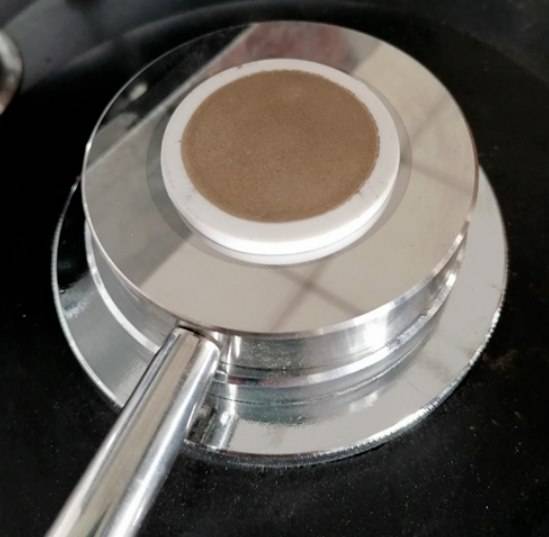
Application in Tabletting Process
Plastic rings are used in the powder compacting method, where the powder sample is compressed into a uniform tablet. The process involves several steps:
- Powder Preparation: The powder sample is first crushed and ground to a fine particle size, typically around 20 μm, to ensure homogeneity.
- Loading the Ring: The prepared powder is then carefully loaded into the plastic ring, ensuring an even distribution to avoid any density variations in the final tablet.
- Compression: Using a manual or electric hydraulic press, the powder is compressed under controlled pressure, usually ranging from 10 to 40 tons. The pressure is maintained for a specific holding time, typically between 10 to 60 seconds, to achieve the desired tablet density.
- Ejection: Once the tabletting process is complete, the plastic ring is carefully removed from the press, and the compressed tablet is ejected for further analysis.
Considerations
- Pressure Sensitivity: While plastic rings are durable, they are more pressure-sensitive compared to metal rings. Operators must ensure that the pressure applied does not exceed the ring's tolerance to avoid deformation or breakage.
- Cleaning and Maintenance: Plastic rings require regular cleaning to remove any residual powder and prevent cross-contamination between samples. They are also easier to clean compared to metal rings, which can sometimes retain residues.
In summary, plastic rings offer a cost-effective, lightweight, and non-reactive solution for tabletting powder samples in XRF spectral analysis, making them a preferred choice in many laboratory settings.
Aluminum Ring Tabletting
Aluminum rings are a preferred choice for tabletting powder samples in X-ray fluorescence (XRF) spectral analysis due to their excellent conductivity and corrosion resistance. These rings are typically made from high-purity aluminum, ensuring minimal elemental contamination during the tabletting process. The use of aluminum rings allows for the creation of uniform and dense tablets, which are crucial for accurate and reproducible XRF analysis.
When preparing powder samples for XRF analysis, the choice of tabletting ring material is significant. Aluminum rings offer several advantages over other materials such as plastic and steel. For instance, aluminum's high thermal conductivity ensures that the tablet remains stable under the high-energy X-ray beams used in XRF analysis, preventing any potential thermal deformation or cracking.
Additionally, aluminum rings are relatively lightweight and easy to handle, making the tabletting process more efficient and less labor-intensive. The process of using aluminum rings involves filling the ring with a precisely measured amount of powdered sample, applying pressure to compact the powder, and then carefully removing the formed tablet. This method ensures that the sample is uniformly compressed, leading to better spectral resolution and lower detection limits for trace elements.
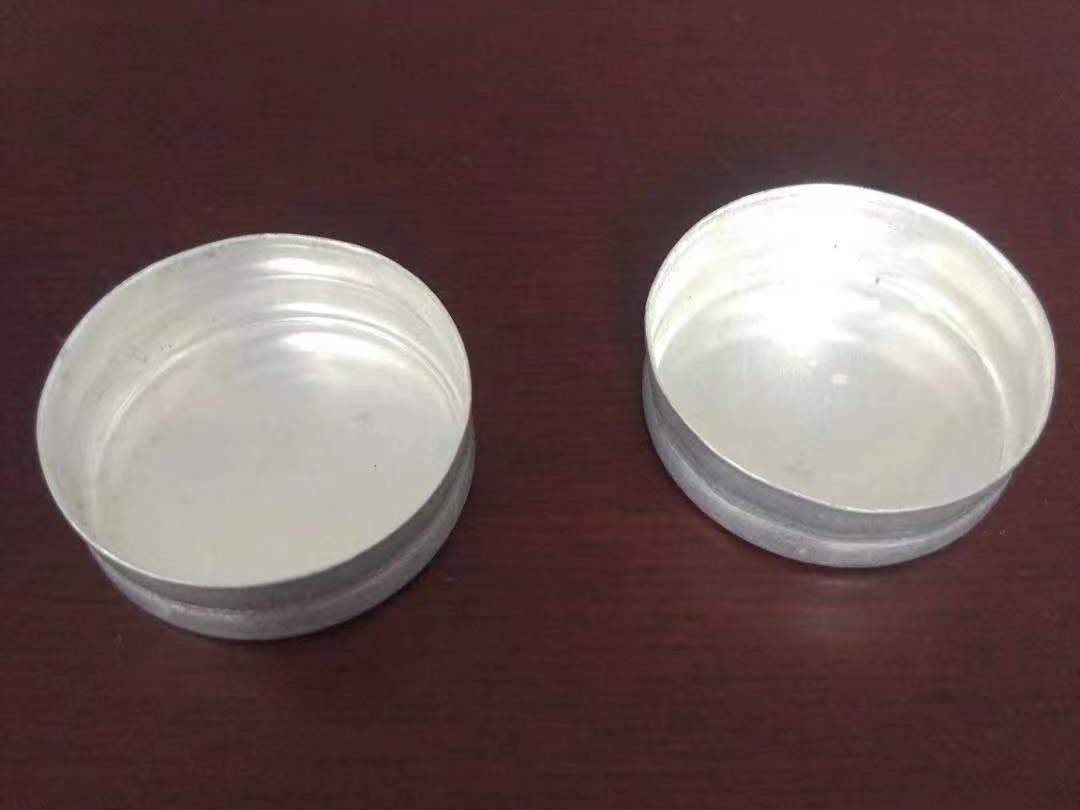
In summary, aluminum rings provide a reliable and effective solution for tabletting powder samples in XRF analysis, offering a combination of conductivity, stability, and ease of use that is hard to match with other materials.
Steel Ring Tabletting
The use of steel rings in tabletting is a meticulous process designed to ensure the integrity and uniformity of powder samples for X-ray fluorescence (XRF) spectral analysis. Steel rings are particularly favored for their durability and ability to withstand higher pressures, which is essential for creating dense, homogeneous tablets suitable for precise analysis.
Steps in Steel Ring Tabletting
-
Selection of Steel Rings: The first step involves selecting the appropriate steel rings based on the sample size and desired tablet thickness. Steel rings are available in various diameters and heights, allowing for customization to fit specific analytical needs.
-
Sample Preparation: The powder sample is prepared by grinding it to a fine consistency, typically less than 74 μm. This ensures that the particles are uniformly distributed within the ring, which is crucial for accurate XRF analysis.
-
Loading the Ring: The prepared powder is carefully loaded into the steel ring. This process requires precision to avoid air pockets, which can lead to inconsistencies in the final tablet.
-
Application of Pressure: A hydraulic press is used to apply pressure to the powder within the steel ring. The pressure typically ranges from 10 to 40 tons, with holding times of 10 to 60 seconds. The pressure and holding time are critical factors that influence the density and homogeneity of the tablet.
-
Removal and Inspection: Once the pressure is released, the tablet is carefully removed from the steel ring. The tablet is then inspected for any defects such as cracks or uneven surfaces. Any defective tablets are discarded to ensure the reliability of the analysis.
Advantages of Steel Ring Tabletting
- Durability: Steel rings are highly resistant to wear and tear, making them ideal for repeated use in high-pressure environments.
- Pressure Tolerance: They can withstand higher pressures compared to plastic or aluminum rings, resulting in denser and more uniform tablets.
- Precision: The precise dimensions of steel rings ensure consistent tablet thickness and diameter, which is vital for accurate XRF measurements.
By following these steps and leveraging the advantages of steel rings, analysts can produce high-quality tablets that are essential for obtaining reliable and precise XRF spectral data.
Related Products
- XRF & KBR plastic ring lab Powder Pellet Pressing Mold for FTIR
- XRF & KBR steel ring lab Powder Pellet Pressing Mold for FTIR
- Automatic Laboratory Hydraulic Press for XRF & KBR Pellet Press
- XRF Boric Acid Lab Powder Pellet Pressing Mold for Laboratory Use
- XRD Sample Holder X-ray Diffractometer Powder Slide











